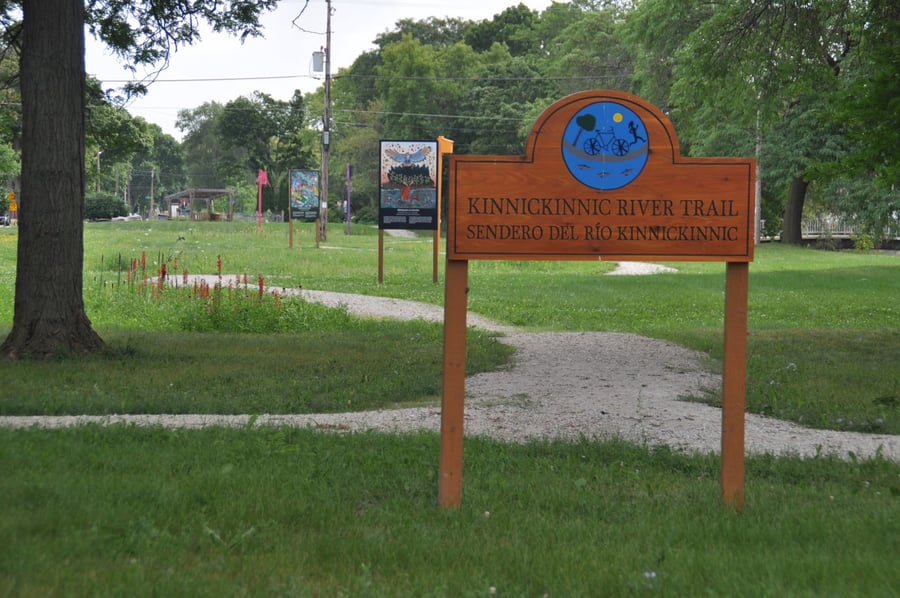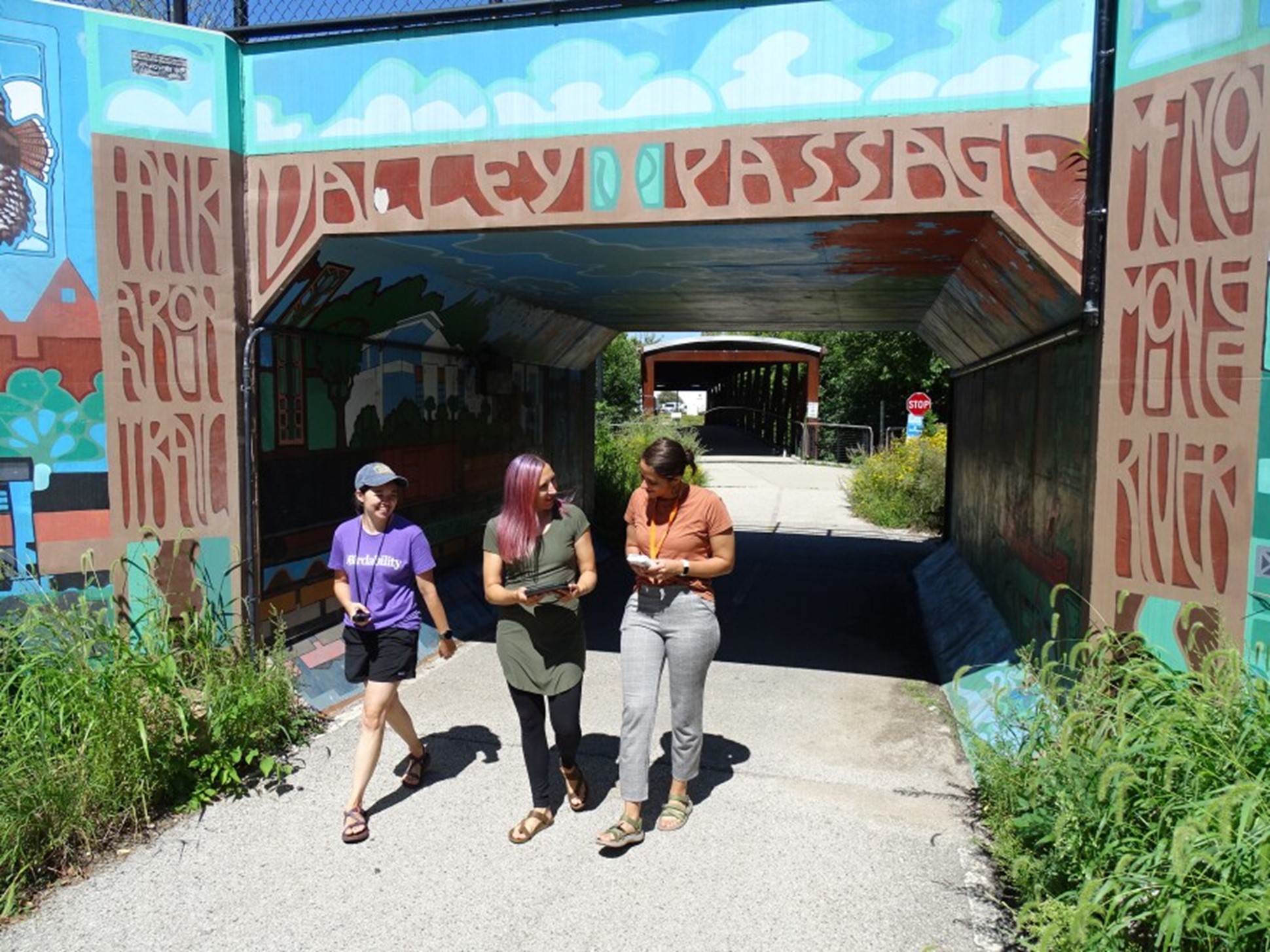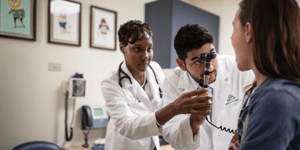Exploring the Health Benefits of Green Spaces in Wisconsin's Urban Neighborhoods
December 19, 2022 Posted by AHW Endowment

To learn more about this funded project, click here.
It's often recommended to "get some fresh air" when someone's not feeling well. The advice is sound: Spending time outside is known to have positive impacts on mental and physical health, such as reducing stress and improving anxiety and depression. Urban parks provide opportunities for surrounding neighborhoods to experience the health benefits of green spaces. However, access to those areas in economically challenged Wisconsin communities is limited.
With funding from the Advancing a Healthier Wisconsin Endowment (AHW), a project entitled Relax and Breathe Easy: Quantifying the Health Value of Quality Urban Green Space aims to discover how different types of green spaces affect health and produce data to inform and shape policies and decisions surrounding green spaces in Wisconsin communities.
The 18-month AHW project is a partnership between the Urban Ecology Center (UEC) in Milwaukee, WisCorps, Sixteenth Street Community Health Centers (SSHC), and the Medical College of Wisconsin (MCW) Institute for Health Equity.
Identifying What Urban Green Space Factors Affect Health
Together, the project partners seek to fill a current knowledge gap: understanding which green space characteristics are associated with differences in air quality and physiological health measures. Using data collected with new technologies made available with AHW funding, they will work to address inequities between green spaces and access to them in Wisconsin neighborhoods and communities and, hopefully, positively influence the future of urban parks.
"We believe that real data collected from and by the community is crucial when individuals and community groups advocate for policy change or promote behavior change. City planners, policymakers, government agencies, health care advocates, and government officials need information that is applicable, meaningful, and local, and offers a common-sense path forward for action," said MCW's principal investigator for the project, Kirsten Beyer, MS, MPH.
Collecting Data and Building Community Engagement
It was a priority for the project partners to establish a volunteer group that represented the socio-economic and racial/ethnic diversity of neighborhoods near the eight chosen parks in Milwaukee and La Crosse. Community members were recruited by the study team to collect data and serve as citizen scientists and were paid for their time. The project volunteers were individuals who aren't typically involved in the decision-making processes of public green spaces but have strong investments in areas and outcomes for their communities.
 Volunteers agreed to visit their designated parks and walk pre-determined paths at specific times, wearing special monitoring devices—Airbeam air quality monitors and EmotiBit biometric stress sensors. AHW funding made it possible to use these advanced technological devices, which provide extensive data on environmental factors and their wearers' physical states.
Volunteers agreed to visit their designated parks and walk pre-determined paths at specific times, wearing special monitoring devices—Airbeam air quality monitors and EmotiBit biometric stress sensors. AHW funding made it possible to use these advanced technological devices, which provide extensive data on environmental factors and their wearers' physical states.

Volunteers also self-reported their feelings and perceived stress during each park walk and participated in testing measuring short-term memory.
According to Kelly Moore Brands, sustainability and environment project manager at SSCHC, project volunteers didn't just participate, but seemed to enjoy and engage in the process. "I expected the participants to have a good time doing what we asked them to do. But I was surprised at how much fun they had and how they connected with other participants. They were very prolific in their notetaking, too. People were really into it."
"We weren't expecting how excited people were to connect…. That aspect of social connectivity and cohesion was something we didn't anticipate with this project," said Courtney Jankowski, MPH, research coordinator III at MCW.
Identifying Green Space Attributes and Elements
In addition to the volunteer-generated data, project researchers used crowd-sourced biodiversity indicators like iNaturalist and eBird to develop an index providing biodiversity information for each park. Project participants also recorded notes about their surroundings during their visits, such as noise levels, how many people were present, and what wildlife they saw. This information is essential to understanding each park's physical and environmental traits and characteristics.

Photo Courtesy of WUWM 89.7
Overcoming Research Challenges
New technologies present exciting learning opportunities, along with interesting challenges. Researchers were tasked with determining how to best capture project data and achieve consistency among volunteer activities across the research locations.
Wisconsin's changing seasons were also a consideration. "Our data collection period was September through November…, and we had to complete all data collection before it got too cold. So, one of the big challenges working against us was seasonality," said Jankowski. Dr. Beyer added, "With seasonality, we had to make clear decisions about when to collect data and when not to so that we have homogenous exposures."
Next Steps: Sharing the Health Benefits of Green Spaces
Now that the AHW-funded project's data collection phase is complete, researchers look forward to diving into analysis. The new device technologies used to collect data will make it possible to explore patterns and study exposures and outcomes MCW researchers haven't been able to explore previously.
Once the analysis is complete, project partners will provide the public with detailed information about the effects of different green space characteristics on health. They will create and distribute interactive maps displaying environmental and health factors for each park, as well as summaries documenting different environmental exposures and physiological stress markers.
Working with neighborhood stakeholder groups in Milwaukee and La Crosse, the organizations will use these resources to advocate for green space and to motivate community residents to be active in their parks.
Kyle Willoughby, the project's community coordinator for WisCorps, is excited to discover the stories the data will tell. "I'm looking forward to sharing the data with the community. With the pandemic, so many got used to being in their homes. Getting them outside and engaging them in projects like this is fantastic."
Brands sees promising outcomes from the diligent work put into the project. "We encourage people to get outside and connect with their environments,” she said “Being able to show with scientific data that there are positive benefits is really important and necessary, but it's also a great way to engage with people, get them outside, and get them to parks—sometimes discovering green spaces in their neighborhoods they didn't even know existed."
Read WUWM 89.7's interview Courtney Jankowski, Kelly Moore Brands, and Amanda Tokuyama about this project here.




